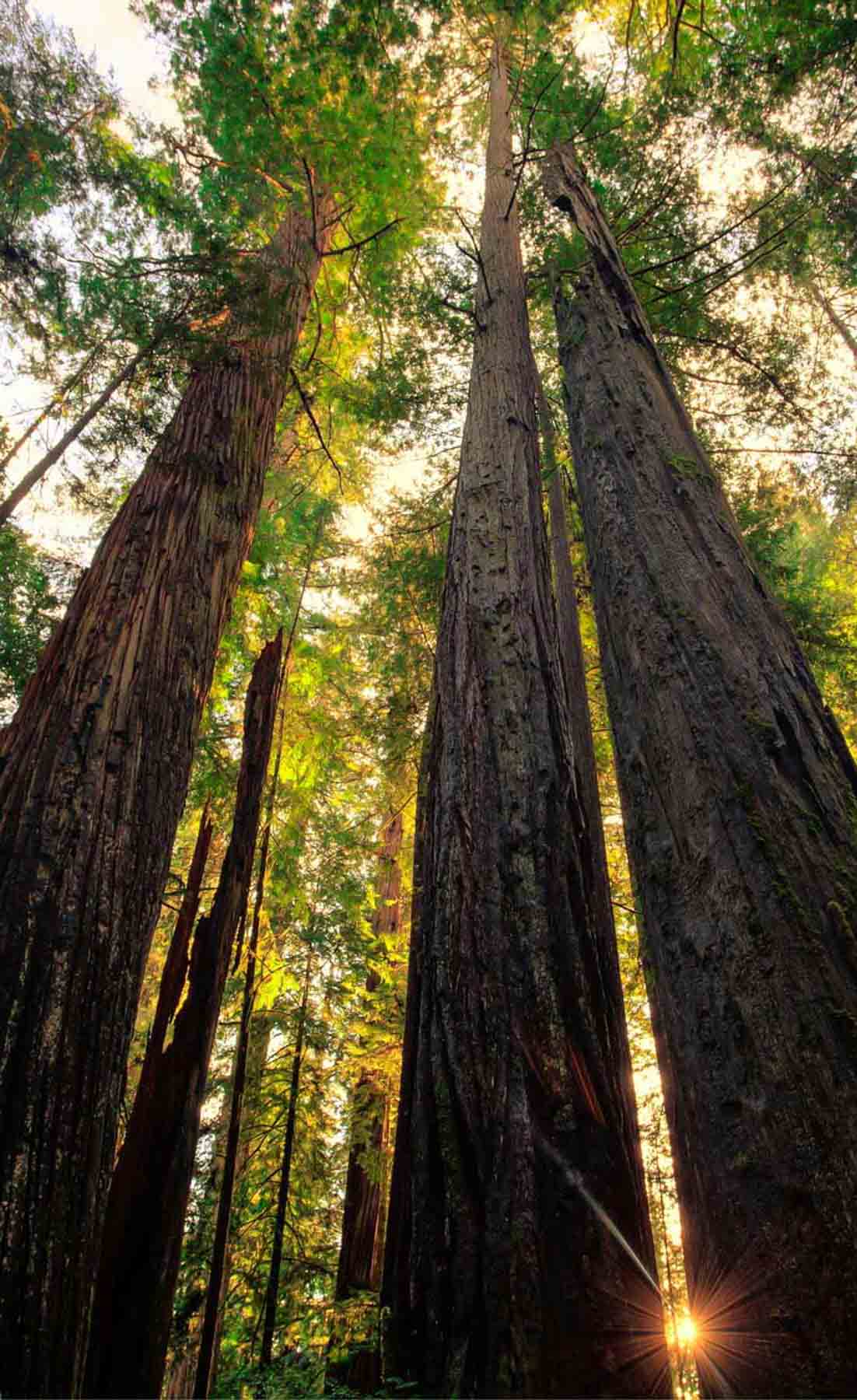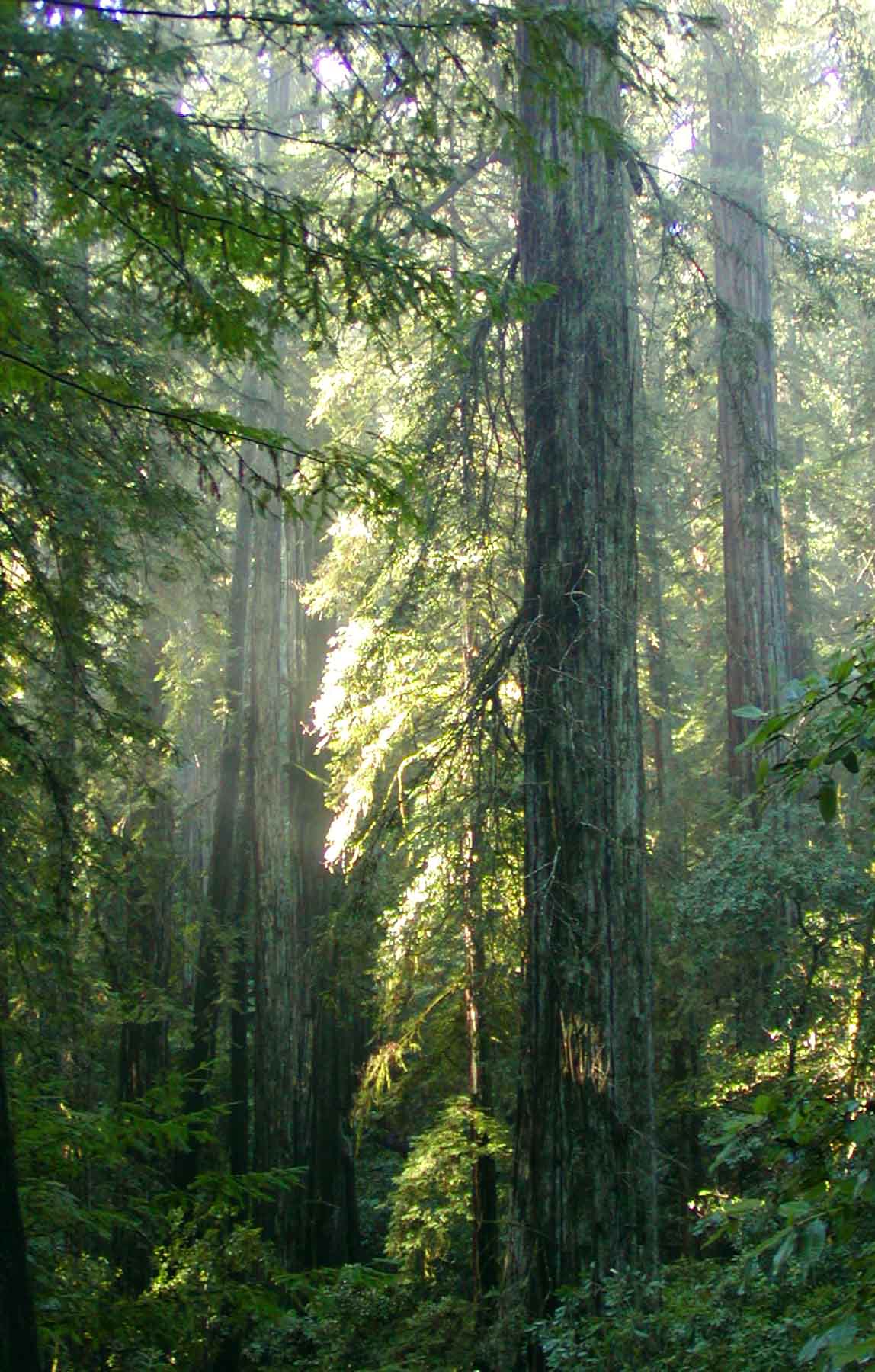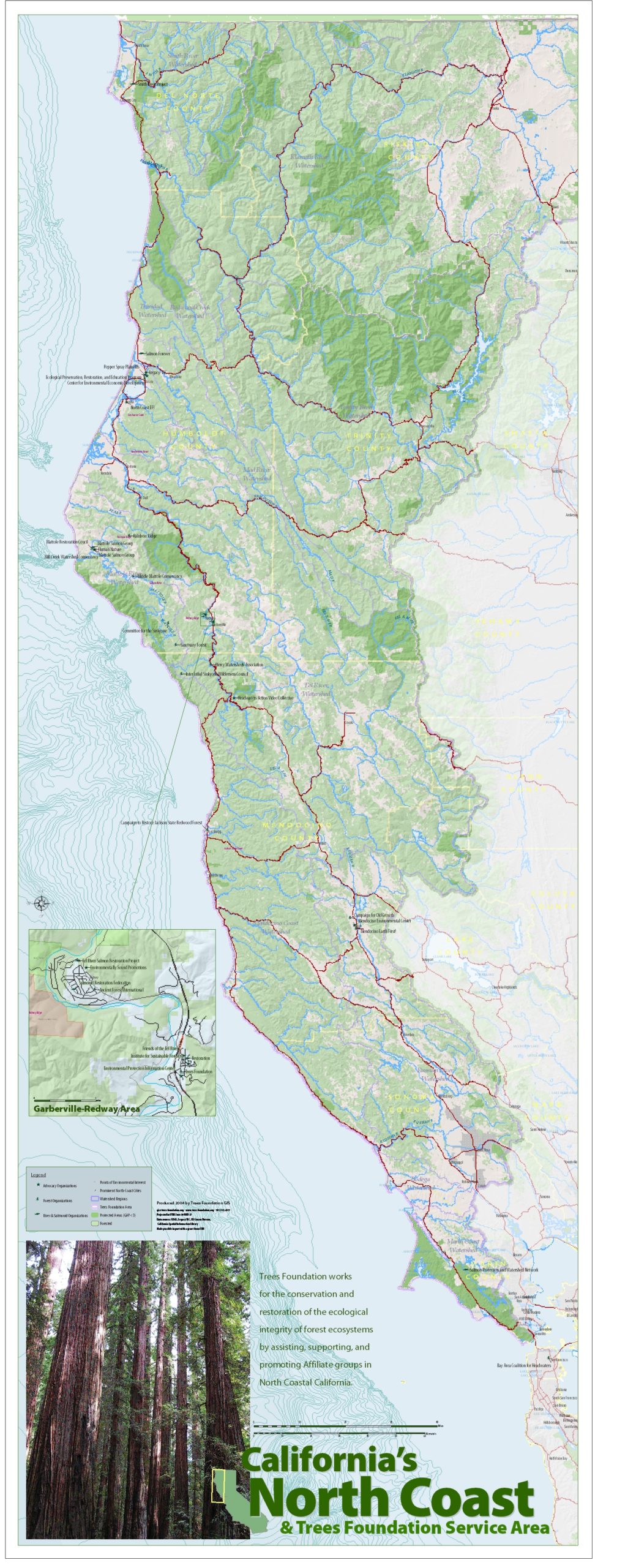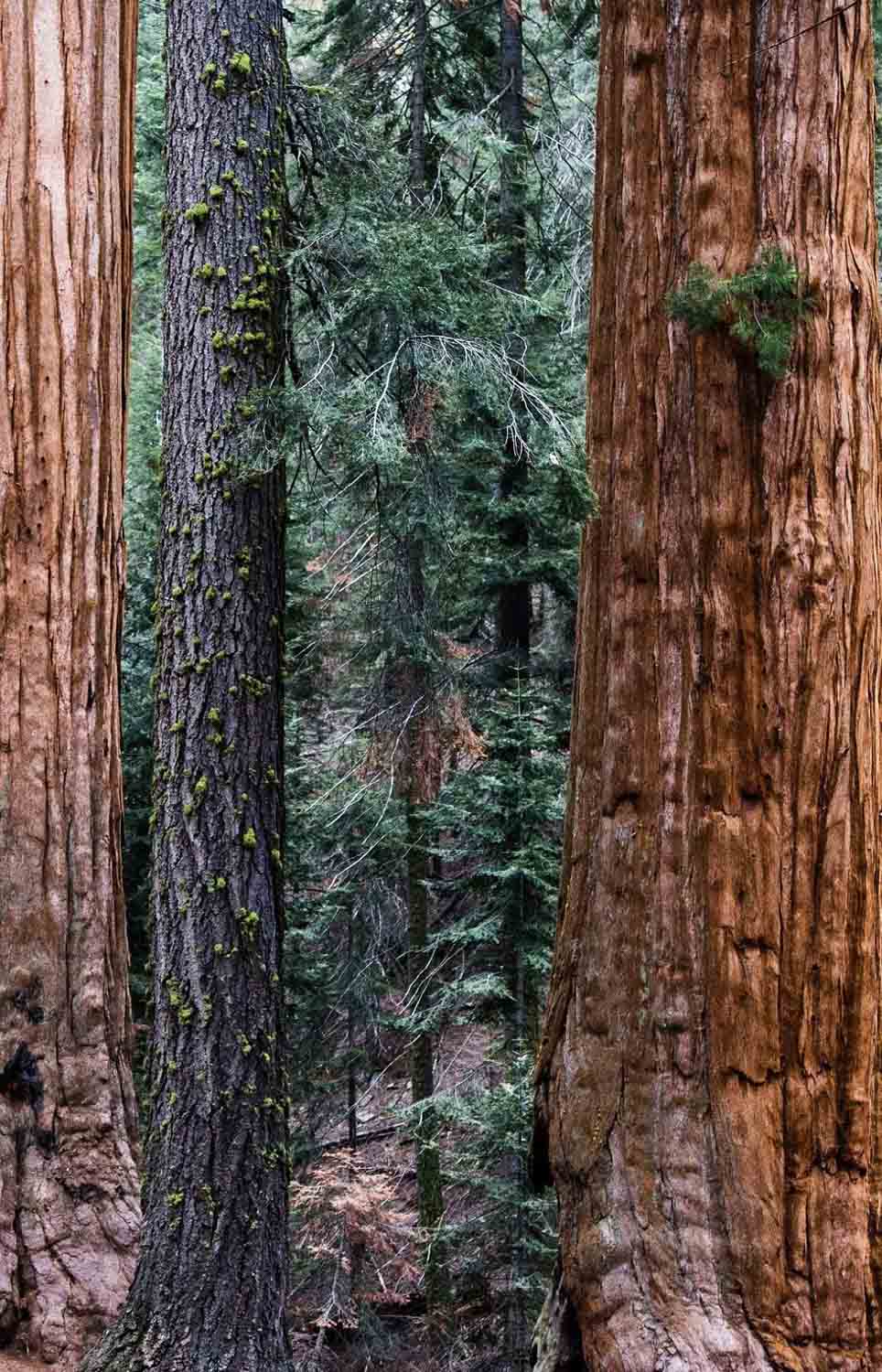
Pacific Temperate Rainforest
Trees Foundation’s service area encompasses the southern portion of the largest temperate rainforest on earth, the Pacific Temperate Rainforest. The Pacific Temperate Rainforest ranges from northern California to southeast Alaska and is one of seven temperate rainforests on earth. Other temperate rainforests can be found in New Zealand and Southeast Australia; the southwest coastal areas of South America; Norway and other parts of Northern Europe; Asia, Taiwan and Japan; and small tracts inland around the Black and Caspian Seas.
Rainforests are ecosystems characterized by heavy rain (over 60 inches a year) and a dense tree canopy. There are two types of rainforest: tropical and temperate. Both types are home to epiphytes— plants whose roots (if present) do not touch the ground. Temperate rainforest epiphytes are mainly ferns, moss and lichen, while tropical rainforest epiphytes, such as orchids and bromeliads, give them their jungle-like appearance.
Home to a rich diversity of species, many of which are found nowhere else in the world, it's an incredible place to explore. And with one of the highest levels of biomass of any place on Earth, you are certain to come across something beautiful on every step of your journey across the forest floor.

Rainforest
According to National Geographic’s encyclopedia’s definition of a rainforest:
“A rainforest is an area of tall, mostly evergreen trees and a high amount of rainfall. Rainforests are Earth’s oldest living ecosystems, with some surviving in their present form for at least 70 million years. They are incredibly diverse and complex, home to more than half of the world’s plant and animal species—even though they cover just 6% of Earth’s surface. This makes rainforests astoundingly dense with flora and fauna; a 10-square-kilometer (4-square-mile) patch can contain as many as 1,500 flowering plants, 750 species of trees, 400 species of birds and 150 species of butterflies.
Rainforests thrive on every continent except Antarctica. The largest rainforests on Earth surround the Amazon River in South America and the Congo River in Africa. The tropical islands of Southeast Asia and parts of Australia support dense rainforest habitats. Even the cool evergreen forests of North America’s Pacific Northwest and Northern Europe are a type of rainforest.
Rainforests’ rich biodiversity is incredibly important to our well-being and the well-being of our planet. Rainforests help regulate our climate and provide us with everyday products.
Unsustainable industrial and agricultural development, however, has severely degraded the health of the world’s rainforests. Citizens, governments, intergovernmental organizations, and conservation groups are working together to protect these invaluable but fragile ecosystems.”


